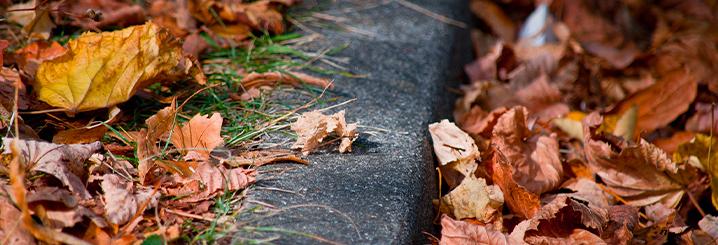DIY wooden fence: here's how to build one cheaply

A fence serves many purposes: it can mark a boundary, divide a garden into distinct areas, protect a vegetable patch or flower beds from over-exuberant pets, hide a compost bin or dustbins, and more besides.
To make a fence you can choose from various materials, such as wood, metal or plastic. If you have a preference for wood, opt for a weather-resistant variety such as larch. Pine also works well and is more economical: simply waterproof it with impregnating agent. Alternatively, you can buy pine fencing that has been pressure-treated or heat-treated.
Are you new to DIY? Start with an easily achievable idea, such as: erect a DIY wooden fence consisting of a few basic elements, i.e. posts, backing rails and vertical boards.
DIY wooden fence: design and materials
We suggest that you build a simple fence, but of course you can customise it however you want. How? By choosing wood that you prefer or that you already have available (including recycled wood); deciding on the height according to your needs (is a low picket fence sufficient, or do you need a high privacy fence?); varying the number, size and shape of the components; changing the assembly system and, perhaps, painting the fence.
As always, we recommend that you start with a design: before proceeding with installation, it is better to get your ideas down on paper to see if they work, calculate the dimensions and so on. Each design should begin with a site evaluation: roughly measure the area where your DIY wooden fence will be erected. Collect style ideas from online and offline sources: rustic, modern, creative, the list goes on. Speaking of designs and styles, check out our tips for making a do-it-yourself garden and creating a Japanese garden.
Each fence has its own peculiarities, so we will only give some general guidelines on materials (timber and hardware) and construction techniques. Our DIY garden fence proposal includes a structural design consisting of:
-
Posts: the load-bearing elements of the fence; square wooden fence posts will do just fine.
-
Backing rails: wooden planks fixed horizontally across the boards; two are sufficient for each bay (the area between each pair of posts).
-
Vertical boards: the slats which, together with the backing rails, form the panels that cover each bay.
The number of wooden elements needed for your fence depends on its length; likewise, the height of the fence depends on your needs and chosen construction method (take into account the part buried in the ground, if any). The length of the backing rails will vary depending on the distance between the posts. The number, height, width and ground clearance of the boards will vary according to the size of each bay and your aesthetic and functional choices.




You can buy ready-made raw materials for your fence (posts and boards), which you can cut to size using a saw. Alternatively you can obtain boards from a tree trunk using a bandsaw or chainsaw mounted on a special guide: here you will find instructions for making planks from a trunk. Prepare them early so they can cure before use. As always, protect your hands with chain-resistant gloves, when using a chainsaw, and utility gloves when doing DIY.
How to build a DIY wooden fence
How to make your fence? Start with the wooden posts, which are the supporting elements. But first you should mark out the line of the fence and identify the precise location of each post (using stakes and string). The area must be clear (strim around it with a brushcutter to remove grass or thicker vegetation) and the ground compact and level.
Then, start fixing the posts. Depending on the situation, you can decide whether to:
-
drive them directly into the ground (the buried portion, the length of which depends on the height of the posts, should be protected with tar).
-
secure them using metal post spikes inserted into the ground.
-
insert them into metal anchor brackets that are screwed into concrete foundations. Make a foundation for each post by digging a hole in the ground (the depth depends on the height of the post) and pouring concrete into it. When the foundation is dry, fasten the bracket to it using screws and concrete anchor bolts. You can also use anchor brackets to secure your fence to a kerb or outdoor paving.


Before fixing the posts, screw in C-clips for attaching the backing rails to the top and bottom of the posts at suitable heights, which you will have previously specified in your fence design. If you intend to use two backing rails for each pair of posts, you need to screw four C-clips into each post (except for the post at each end of the fence, which only needs two). Once the C-clips are fitted, you can start attaching the boards of your DIY wooden fence.
At this point assemble the boards into panels, each consisting of a certain number of boards fixed together using two backing rails. Screw the boards to the backing rails, spacing them apart as specified in your design. Now your DIY wooden fence is almost ready — simply mount the panels to the posts by inserting the backing rails into the C-clips that you previously installed.
Do you have a passion for making things? Are you good with your hands? Here you will find our guides to building a multi-purpose DIY gazebo or a rustic wooden bench.
But DIY isn’t all about carpentry: in the garden you can build a pond, if you have surplus space, or a path in stoneware, stone or wood.



